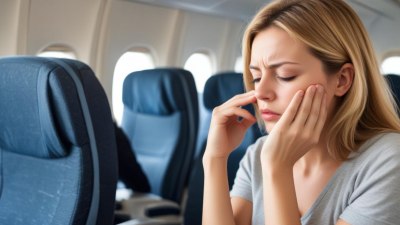What’s the Best Way to Handle Motion Sickness While Traveling?
Discover effective strategies to manage motion sickness while traveling and enjoy your trips without discomfort.

This image was created with the assistance of Freepik
Motion sickness is a common travel issue that affects many individuals, making journeys uncomfortable and even distressing. It occurs when the brain receives conflicting signals from the inner ear, eyes, and deeper body parts that are involved in motion sense. As we embark on traveling adventures—whether by car, plane, train, or boat—our body can sometimes struggle to adapt to the movement, leading to symptoms like nausea, dizziness, and vomiting. Fortunately, several effective strategies exist to help manage and prevent these unwanted symptoms.
Understanding Motion Sickness
Before addressing the best ways to handle motion sickness, it’s important to understand its causes. The condition arises because your inner ear, eyes, and deeper body parts send different messages to your brain. For example, when reading a book in a moving vehicle, your inner ear senses motion, while your eyes focus on a stationary object. This discord can lead to symptoms of motion sickness.
Common symptoms include sweating, dizziness, pale skin, nausea, and vomiting. The severity of these symptoms varies by individual, and some people are more predisposed to motion sickness than others. Factors such as genetics, age, gender, and hormonal changes can affect one’s susceptibility.
Preventive Measures Before Traveling
Taking proactive steps before your journey can significantly reduce your risk of experiencing motion sickness. Here are several recommendations:
1. Choose the Right Seat: When traveling by car, sit in the front seat where you can see the road ahead. On planes, choose a seat over the wings where motions are less pronounced. For trains and boats, try to position yourself in the middle of the vehicle.
2. Avoid Heavy Meals: Prior to traveling, eat a light meal. Heavy, greasy foods can exacerbate nausea if you experience motion sickness. Opt for bland, non-greasy options like crackers or toast.
3. Stay Hydrated: Dehydration can worsen symptoms of motion sickness. Drink water or electrolyte-balanced beverages before and during your travel to stay hydrated.
4. Get Plenty of Rest: Fatigue can heighten your sensitivity to motion sickness. Ensure you get adequate rest before embarking on your journey.
During Travel: Tips for Managing Symptoms
If you do start to feel queasy during your travels, employ some strategies to alleviate your discomfort:
1. Focus on a Fixed Point: Look out at the horizon or a fixed point ahead to help your brain reconcile the conflicting signals it is receiving.
2. Limit Reading or Screen Time: Avoid focusing on books, phones, or screens while moving, as this worsens sensory conflict. If essential, take frequent breaks to look at the scenery.
3. Breathe Deeply: Controlled breathing can help calm both your body and mind. Practice deep, slow breathing to ease the feelings of nausea.
4. Use Fresh Air: If possible, open the windows or use air vents to circulate fresh air. A blast of cool air can make you feel more comfortable.
Over-the-Counter Medications
Many travelers find relief from motion sickness through over-the-counter medications. It’s crucial to consult a healthcare professional before starting any medication. Here are some common options:
1. Antihistamines: Medications such as dimenhydrinate (Dramamine) and meclizine (Bonine) help prevent nausea and are effective when taken before travel commences. Always follow label instructions regarding dosage.
2. Scopolamine Patch: This prescription-only medication comes in the form of a patch that you adhere behind your ear a few hours before travel. It gradually releases medication that combats nausea.
3. Ginger Supplements: Ginger capsules, candies, or teas may help soothe stomach discomfort caused by motion sickness for some individuals, with less severe side effects.
Alternative Remedies
For those looking to avoid medication altogether, there are alternative remedies that may help mitigate motion sickness symptoms:
1. Acupressure: Applying pressure to specific points on the body can be effective for preventing nausea. Many find relief using wristbands that apply pressure to the P6 point, located on the inner wrist.
2. Aromatherapy: Scents such as peppermint and lavender are believed to relieve feelings of nausea. Consider bringing essential oils to inhale or using scented wipes during travel.
3. Eating Ginger: Natural ginger-root snacks or ginger-infused products can help calm your digestive system and stave off nausea.
The Role of Genetics
Interestingly, genetics may play a role in who experiences motion sickness. Studies indicate that certain genetic factors can predispose some individuals to heightened sensitivity to motion. If you have a family history of motion sickness, you might want to take additional precautions when planning trips.
While motion sickness can be uncomfortable, understanding your triggers and taking appropriate measures can drastically improve your travel experiences. By employing preventive techniques, utilizing medications, and exploring alternative remedies, you can enjoy your journey without the looming threat of nausea and discomfort.
In summary, the best way to handle motion sickness while traveling is to prepare in advance through preventive measures, manage symptoms effectively during travel, and consult with a healthcare provider about possible medications. Experiment with various techniques to find what works best for you, ensuring that nothing hinders your travel adventures in the future.











